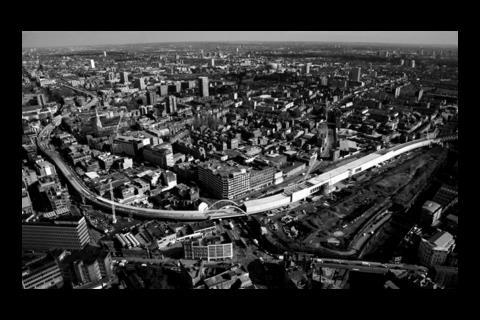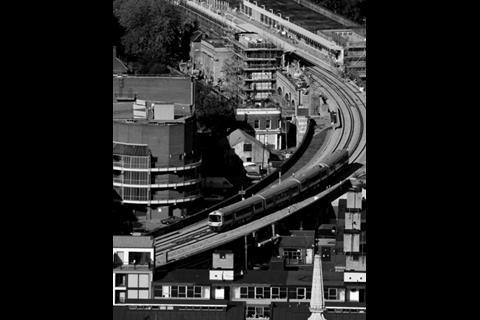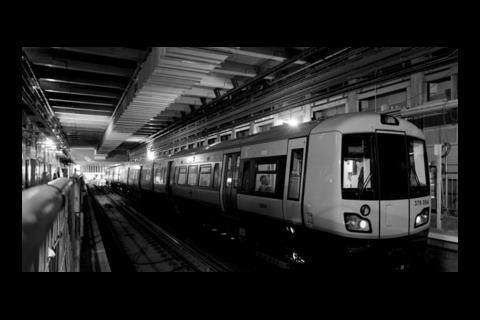The ┬Ż1bn East London line extension, which opens in May, is the first part of a plan to give the capital an orbital railway. Stephen Kennett looks at the work done and how the circle will be completed
It may seem slightly surprising for a structure that lurks deep beneath east London, but this tunnel was once hailed as the eighth wonder of the world. Built by Marc Brunel in 1843, and the project that his son Isambard cut his teeth on, it was the first tunnel to be succesfully constructed under a navigable river. The Thames Tunnel, which runs between Wapping and Rotherhithe, is a reminder of LondonŌĆÖs central role in the golden age of engineering ŌĆō which makes it all the more frustrating that for most of its existence it has had to serve an increasingly fragmented rail network operating in and around the capital.
Up until now, despite many lines running tantalisingly close to one another, it has been impossible to circumnavigate the city by train. LondonŌĆÖs railways have been about bringing people into town and sending them out, which is fine if your journey happens to pass through the centre. Otherwise itŌĆÖs a bit inconvenient.
Finally, this is about to change. After four years of intensive work, phase one of LondonŌĆÖs first orbital railway, offering a fast, frequent ŌĆ£turn up as you goŌĆØ service similar to the Underground, is on the verge of opening. Strictly speaking, the network, when finished, will be more than an orbital. It will take in 20 of LondonŌĆÖs 32 boroughs, stretching from as far as Watford Junction in the north to west Croydon in the south (see map, overleaf). The phase of the project that will open in May is usually referred to as the East London line extension phase one, and will run south from Dalston to Crystal Palace and west Croydon (via the BrunelsŌĆÖ refurbished tunnel).
The ┬Ż1bn project has involved the conversion of 9km of the old East London line to suit mainline Electrostar trains, which means that in February next year, when the section from Dalston to Highbury & Islington is completed, the extension will from a vital link in the circle. This section will connect Dalston to the old North London line ŌĆō which runs from Richmond in south to Stratford in the east ŌĆō dramatically relieving traffic to the Victoria line in the process.
The East London line extension has always been a race against time. Since the line was closed in November 2007, a train depot has been built at New Cross, as have four new stations at Dalston, Haggerston, Hoxton and Shoreditch High Street. Then there are the three new bridges, the upgrading of the abandoned Victorian viaduct at Broad Street, the refurbishment of existing stations, all the new signalling and power infrastructure ŌĆō not to mention those 9km of new track. On 23 May, all this will be ready for public service.
It will take in 20 of LondonŌĆÖs 32 boroughs, stretching from Watford Junction in the north to west Croydon in the south
ŌĆ£Taking a railway off the drawing board and in about six years procuring it, building it, completing the stations, procuring the rolling stock, testing it and getting it open is very quick by British and European standards, especially through such a built-up urban area,ŌĆØ says Howard Smith, London rail chief operating officer for Transport for London.
After the section from Dalston to Highbury & Islington is completed in February, the final part in the loop is to connect the London overground services west from Surrey Quays around to Clapham Junction. Funding has been secured for this project, known as the East London line extension phase two. Valued at ┬Ż75m, it is significantly smaller than phase one and mainly uses existing Network Rail track.
The main civil contract is a 1.3km section tying the existing East London line from Surrey Quays into the Network Rail track close to Old Kent Road. This is valued at ┬Ż15-18m and will be procured in or around June. Packages for upgrading the existing track will be procured under Network RailŌĆÖs framework.
There is also the potential for a new station at Surrey Canal Road, north of Peckham. There are still question marks over where the ┬Ż10m funding might come from. ŌĆ£WeŌĆÖre not going to rule it out and weŌĆÖll build the railway with passive provision for it,ŌĆØ says Smith. ŌĆ£Three to four years ago the presumption was weŌĆÖd go ahead with it but now times are a bit tougher you have to be a bit more selective.ŌĆØ
Work for phase two is due for completion around 2012. Speed of completion is less crucial than it was for the earlier work, says Smith, and the priority will shift from outright speed to cost. By 2012 though the work will be complete and for the first time passengers will be able to travel around the capital without having to journey through the belly of the beast ŌĆ”
Downloads
Map
Other, Size 0 kb
║├╔½Ž╚╔·TV Market Report - Transport
- 1
- 2
- 3
- 4
 Currently reading
Currently readingIn the loop
- 5
- 6




































No comments yet